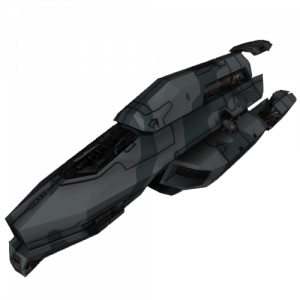Difference between revisions of "Ship Assault-Craft USN Orion"
| Line 16: | Line 16: | ||
}} | }} | ||
| − | Orignally designed by [[Yearman Aerospace]] in 909 [[AE]], the Orion class would not see active service in the [[United Space Navy]] until later 913, when pressure from within naval command pushed for a solution to the new technologies being fielded by the [[ | + | Orignally designed by [[Yearman Aerospace]] in 909 [[AE]], the Orion class would not see active service in the [[United Space Navy]] until later 913, when pressure from within naval command pushed for a solution to the new technologies being fielded by the [[Solarian League]] and [[EBA]] during their most recent conflict. The navy demanded a hardy vessel which was simple to maintain and both cheap and easy to man. YA answered with the Orion class, and the ship was to see duty for the better part of a century. Its successes led to a radical change in the disposition of the USN's fighter corps, with more pilots being assigned to assault-ship wings then ever before. |
Though it is now one of the USN's most outdated models, the Orion class was considered elderly even during the [[Solesian War]] more than 40 standard years prior to the [[Event_Second_Antarean_War|Antarean conflict]]. This aging vessel is still found among the USN garrison forces in backwater areas. | Though it is now one of the USN's most outdated models, the Orion class was considered elderly even during the [[Solesian War]] more than 40 standard years prior to the [[Event_Second_Antarean_War|Antarean conflict]]. This aging vessel is still found among the USN garrison forces in backwater areas. | ||
Latest revision as of 12:24, 14 July 2020
| Orion | |
|---|---|
 Orion | |
| Type | Assault-Craft |
| Combat role | Patrol Ship |
| Service | |
| Used by | United Space Navy |
| Wars |
Solesian War Second Antarean War |
| Specifications | |
| Displacement | 32kt |
| Length | 120m |
Orignally designed by Yearman Aerospace in 909 AE, the Orion class would not see active service in the United Space Navy until later 913, when pressure from within naval command pushed for a solution to the new technologies being fielded by the Solarian League and EBA during their most recent conflict. The navy demanded a hardy vessel which was simple to maintain and both cheap and easy to man. YA answered with the Orion class, and the ship was to see duty for the better part of a century. Its successes led to a radical change in the disposition of the USN's fighter corps, with more pilots being assigned to assault-ship wings then ever before.
Though it is now one of the USN's most outdated models, the Orion class was considered elderly even during the Solesian War more than 40 standard years prior to the Antarean conflict. This aging vessel is still found among the USN garrison forces in backwater areas.
Replacement parts are cheap and plentiful, and it is a popular craft, often supplementing poorer system navies which can easily and cheaply field large fleets of these vessels.
Despite being based on outdated technology, the Orion is not a vessel to be taken lightly. Due to it hardy nature, availability of parts, and ease of maintenance many variants of the vessel exist. However, it is the vessel's extreme simplicity that offers its best tactical asset. The standard armament of this vessel includes four Hesparc light laser clusters and a single light gatling rail turret. While this makes the Orion effective at fending off small craft and intercepting torpedoes, it is ill equipped to tangle with capital ships. More popular upgrade packages attempt to correct this deficiency with "bolt-on" weapons, such as missile racks or single-shot torpedoes. Though these modifications have seen limited success, the USN has been slow to retrofit its existing fleet.
| ||||||||||||||||||